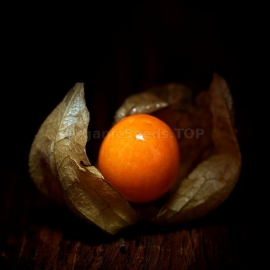



«Strawberry» - Organic Tomatillo Seeds
1.14 €
usk tomatoes have light-brown, papery husks (calyxes) that enlarge and cover the maturing fruits. The 2 most common cultivated species are the ground cherry and the tomatillo. Both have been cultivated in Central and South America for centuries.
-
Heirloom Tomatillo «Strawberry»
Husk tomatoes have light-brown, papery husks (calyxes) that enlarge and cover the maturing fruits. The 2 most common cultivated species are the ground cherry and the tomatillo.
Both have been cultivated in Central and South America for centuries, before even tomatoes. Ground cherries are so named because the cherry-sized fruits are borne near the ground. The leaves of ground cherries are hairy or fuzzy and the plants grow 1-2 ft. tall with lateral spreading growth. Tomatillos are larger-fruited, typically 1-3 in. diameter, and the plants grow 2-5 ft. tall with smooth leaves. Some varieties may grow 8 ft. or more with a ground-hugging growth habit. The Spanish name tomatillo is derived from the Indian name "tomatl."
Growing
Tomatillo is a frost-sensitive, warm season crop. Sow tomatillo seeds indoors 6-8 weeks before the last spring frost. Plant tomatillo seeds ¼” deep into small containers full of potting soil. Seeds will take one to two weeks to germinate. Transplant outdoors in a sunny spot after all danger of frost has passed and the soil begins to warm. Most varieties have a bushy growing habit and require ample space to grow, so space your plants 24 to 48” apart. Plants may be staked or trellised to keep foliage off the ground and to contain the plants.
Tomatillo plants are susceptible to early blight, anthracnose, late blight, and tobacco mosaic virus, among other diseases. Take care to rotate crops in your garden and remove diseased plants promptly.
Tomatillo come in various sizes and colors. All varieties have a netted, papery husk around the fruit that begins to dry when fruits are maturing. Harvest tomatillo when they are firm to the touch but seem to give a little. Ripe fruits will pull easily from the plant.
Eating and Storing
Tomatillo can be sliced into a fresh salsa, canned as a salsa verde sauce, or pureed to make a sauce for carnitas or tacos. Fruits can also be broiled and pureed with chili peppers for a different take on salsa verde. If you are given a bumper crop of tomatillo, try canning a green salsa at home. Store tomatillos at room temperature. Fruits will continue to ripen after being picked if they are stored in a warm place.
Saving Seeds
Tomatillo is an annual crop. It will complete its full life cycle, including germination, reproduction, and death, in one growing season. When saving seeds from tomatillo, separate varieties by 800-1,600 feet. Plant at least 5 tomatillos to ensure viable seed. When maintaining a variety over time, save seeds from between 20-50 plants.
Tomatillo seeds are ripe when the fruit is ready to eat. To save seeds from tomatillos, squeeze out the pulp and seeds from the inside of the fruit.
To separate the seeds from the surrounding pulp, seeds and pulp should be fermented. Put the pulp and seeds and a little bit of water in a small container. Leave this container to sit for at least one day. A cap of mold will form on the mixture and good seeds will sink to the bottom. After a few days, skim off the mold and any floating seeds and then add clean water to the mixture. Decant the liquid from the sunken, viable seeds. Repeat this process until most of the pulp is washed away. Pour the seeds into a mesh strainer and give the seeds a final rinse under running water.
Lay the tomatillo seeds out on a screen or coffee filter to dry. Seeds are dry enough for storage when they can be cracked cleanly in half.
When stored in a cool, dry place, tomatillo seeds will remain viable for six years.
